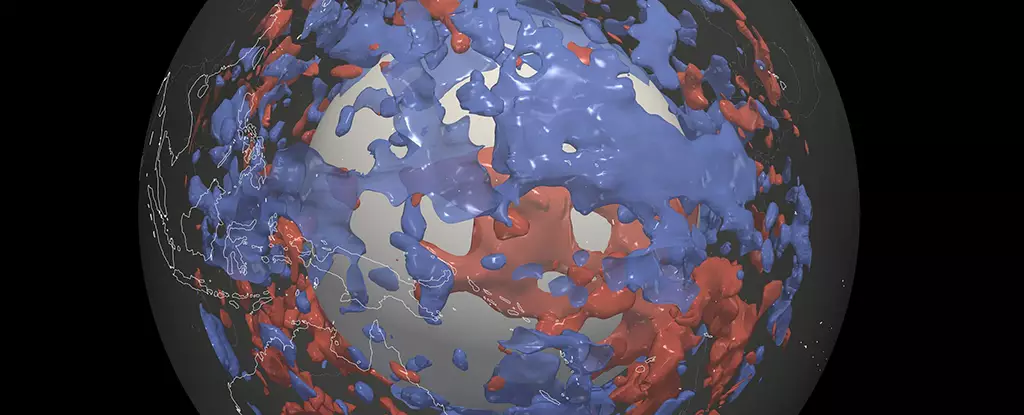The intricate layers of our planet, particularly the mantle, have long fascinated scientists. Recent advancements in seismic wave analysis have opened new avenues for uncovering the mysteries hidden beneath our feet. A collaborative effort between researchers at ETH Zurich and the California Institute of Technology has unveiled surprising findings about Earth’s structure, revealing remnants of tectonic plates in unexpected locations. By utilizing the immense computational capabilities of the Piz Daint supercomputer, these scientists have pushed the boundaries of what is understood about the Earth’s interior.
Seismic waves are akin to the echoes of our planet’s geological activity, carrying information about the materials they traverse. Over the past century, geoscientists have been employing various seismic waveforms to chart the subterranean landscape of Earth. These waves travel at different velocities depending on the nature of the materials they encounter, providing crucial insights into Earth’s composition. However, the complexity of these signals often limited scientists’ ability to construct comprehensive models of the Earth’s lower mantle, which is crucial for understanding plate tectonics and geological phenomena.
In a groundbreaking study, the researchers capitalized on the processing capabilities of the Piz Daint supercomputer to analyze a broader spectrum of seismic wave types. This comprehensive approach allowed for the creation of an exceptionally detailed map of the lower mantle. The results were astounding—large fragments resembling tectonic plates were discovered in regions far removed from known subduction zones. These findings challenge long-held assumptions about the distribution of tectonic materials beneath the Earth’s surface, indicating a more complicated geological narrative at play.
One key finding from the study is the presence of “plate-like” structures situated beneath the western Pacific Ocean, among other locations. Traditionally, scientists assumed that fragments of tectonic plates would not stray far from their origination points due to the mechanics of subduction, where denser plates sink beneath lighter ones. However, the researchers’ detailed mappings suggest that these ancient remnants are dispersed throughout the lower mantle, raising questions about their origins and the geological processes that contributed to their current locations.
Thomas Schouten, an Earth scientist involved in the study, posits that these enigmatic structures might have experienced various formative processes throughout geological history. It is critical to understand that the seismic waves analyzed correspond to one property of the Earth’s material—specifically, the speed at which they move through different substances. This has led to a nuanced understanding that requires examination beyond simple wave velocities. Schouten commented on the need to explore deeper into the material properties that explain the disparity in wave speeds.
One hypothesis suggests that the identified structures might consist of ancient silica-rich materials that have persisted since the formation of the mantle approximately 4 billion years ago. Alternatively, these formations could represent iron-rich rock accumulations resulting from mantle dynamics over time. The study emphasizes the importance of determining the geological history of these materials, as each fragment uncovered could narrate a part of Earth’s complex story.
Further exploratory research is required to establish the composition and origins of these subductions. Scientists are poised to investigate the implications of these discoveries on our understanding of mantle convection, tectonic movements, and the evolution of the Earth’s crust.
The insights gained from this study highlight the vast complexities of Earth’s lower mantle. As researchers continue to analyze these seismic findings, the potential for transformative discoveries in Earth science grows. The existence of these unexpected tectonic remnants not only calls into question current geological models but also invites a broader discourse on how Earth dynamics have evolved over billions of years. Each new piece of information will contribute to a clearer, more comprehensive understanding of our planet’s geological sculpting forces, reminding us that beneath the surface lies a world full of secrets waiting to be unveiled.



Leave a Reply